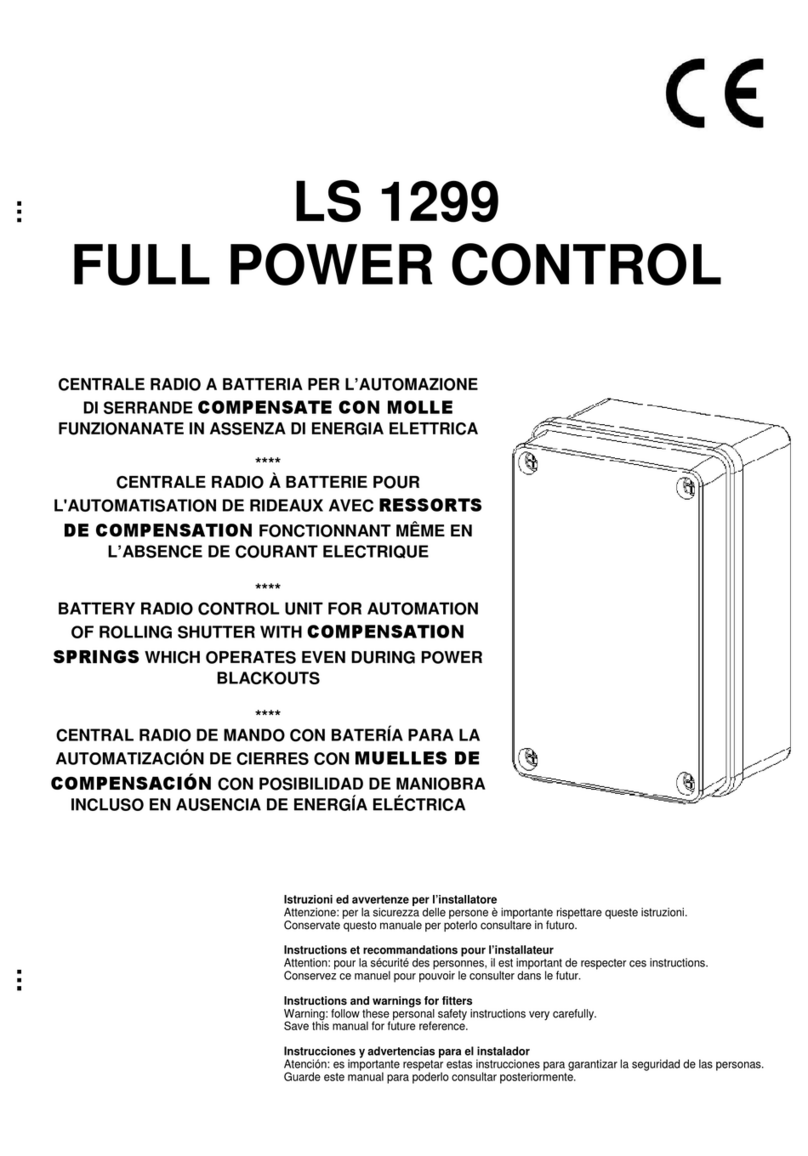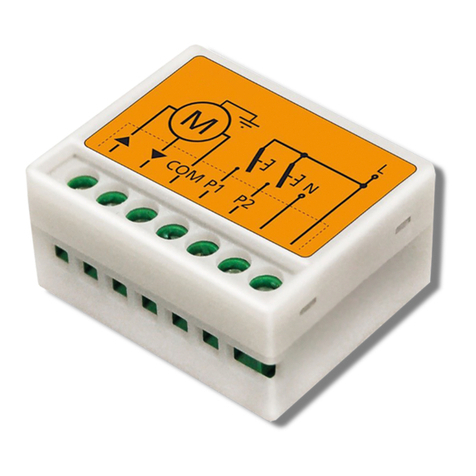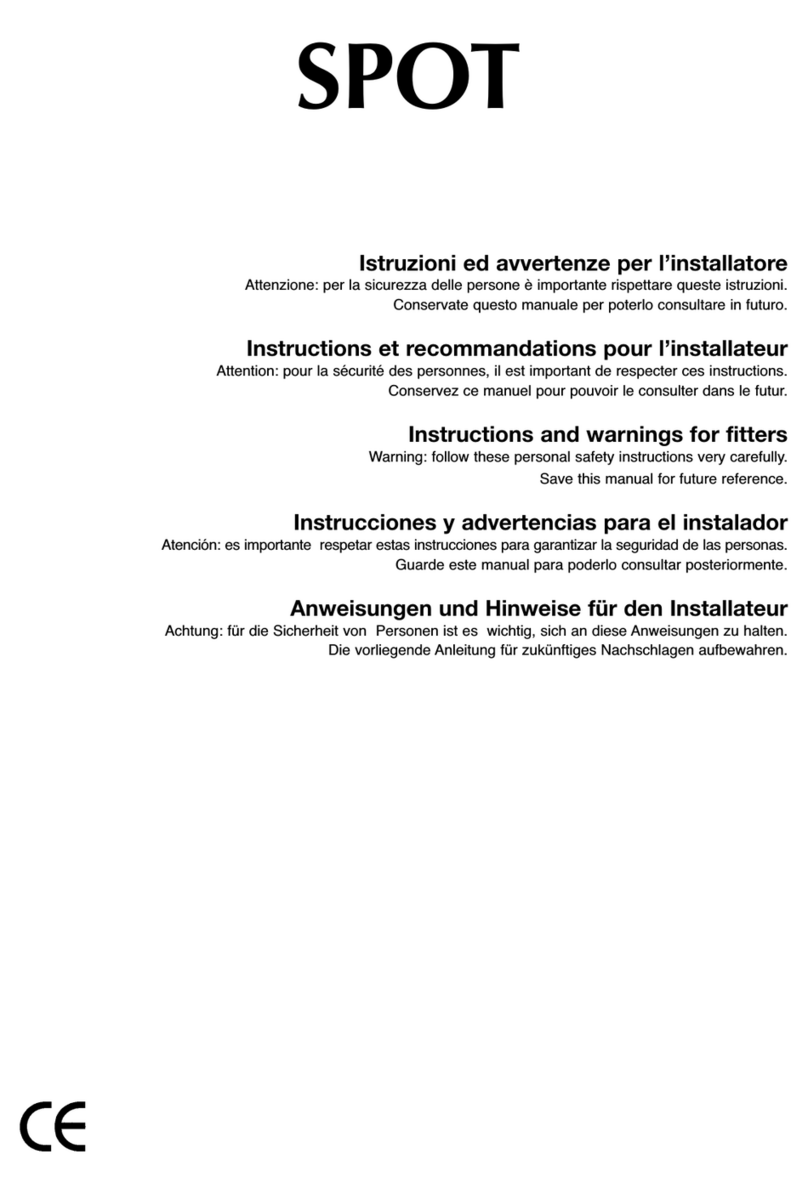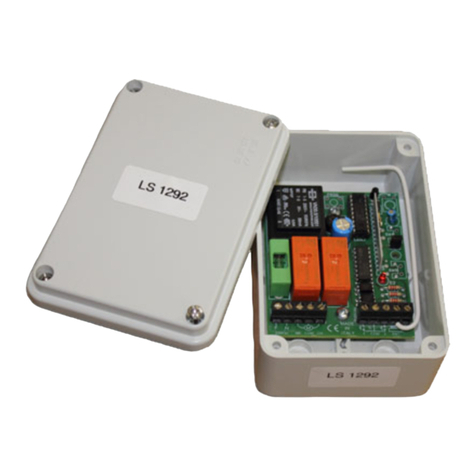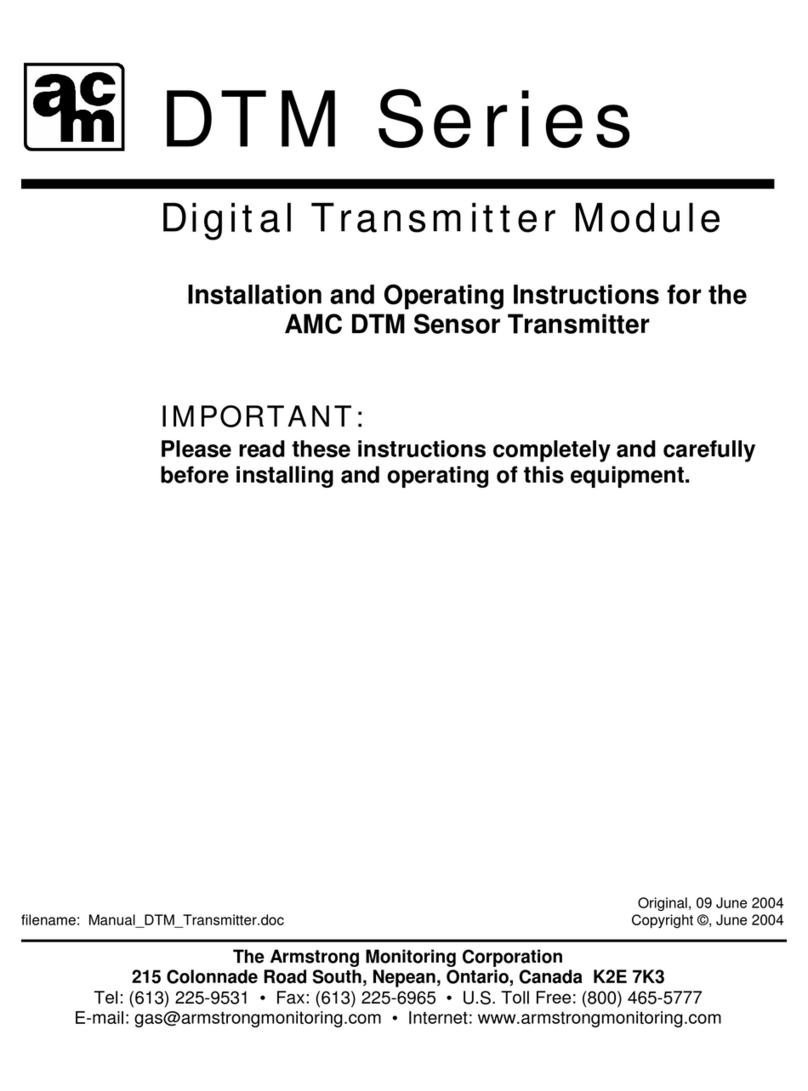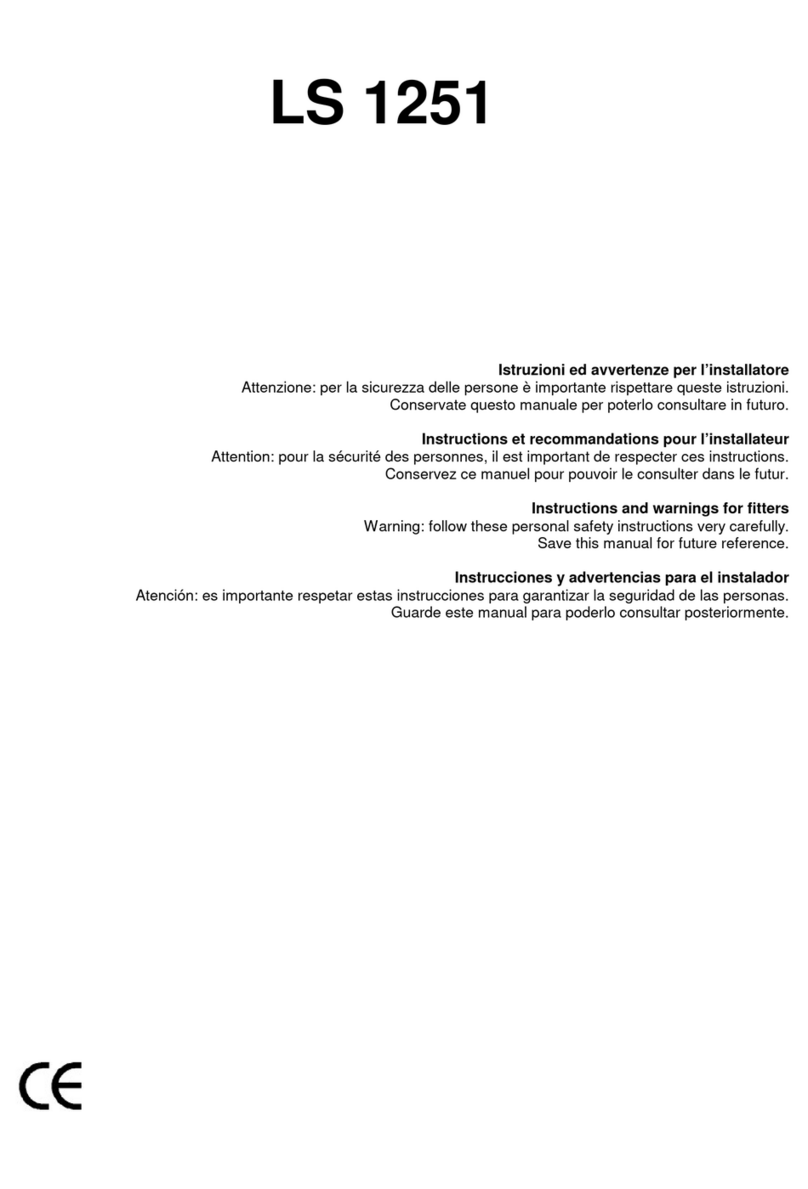
ENGLISH
- 7 -
TECHNICAL SPECIFICATIONS
Power supply: 230V ~ 50/60 Hz / 115V ~ 50/60 Hz
Relay contacts: 16A 250V ~
Operating time: max. 150 seconds
Automatic closing time: programmable max. 3 minutes
Radio code scheduling: self-learning
Max number of stored transmitters: 30
Frequency: 433.92 MHz
Sensitivity: greater than -100 dBm
Reception range: standard 70 m
Antenna: built-in
Working temperature: -10 to 60°C
Fuse: 5A (230V) / 10A (230V)
ELECTRICAL CONNECTIONS
CON.1
1. 230/115 Vac line input (Phase)
2. 230/115 Vac line input (Neutral)
CON.2
3. Close motor output
4. Open motor output
5. Common motor output
6. Flashing output (UNIVERSAL3 only)
7. Flashing output (UNIVERSAL3 only)
CON.3
8. Services power supply output +12 Vdc
9. Services power supply output -12 Vdc
10. Safety device input, photocell (NC)
11. Common GND input
12. Open-close button input (NA)
13. Open button input (UNIVERSAL3 only)
14. Stop button input (UNIVERSAL3 only)
15. Close button input (UNIVERSAL3 only)
NOTE:
• Since the control unit is not equipped with any circuit
breaker for the 230Vac power supply, always provide for
a suitable circuit breaker.
• Normally closed (NC) inputs must be bridged if not used
mIMPORTANT WARNINGS
THE CONTROL UNIT DESCRIBED IN THIS MANUAL IS DESIGNED
FOR THE CONTROL AND OPERATION OF MOTORS SUITABLE TO
AUTOMATE ROLLING SHUTTERS.
THE MANUFACTURER DECLINES ALL RESPONSIBILITY FOR
DAMAGE TO PERSONS OR THINGS DUE TO IMPROPER USE
OF THE DEVICE, FAILURE TO OBSERVE THE INDICATIONS
HEREIN, OR INCORRECT INSTALLATION.
Hence, installation of the unit is not permitted before the
following instructions in this manual have been read thoroughly.
The installation must be conducted only by technical personnel
who is duly qualified to handle the device in question.
Similar considerations apply to the scheduling phases and to any
maintenance interventions that may be necessary.
• During wiring, the equipment must be completely
disconnected from the mains.
• The use of this equipment must strictly follow and respect the
reference technical standards.
• Installation and/or maintenance must be carried out only by
qualified personnel in compliance with applicable regulations.
• The manufacturer cannot be held responsible for any damage
caused by improper and/or unreasonable use.
• Incorrect installation or improper use of the product can
compromise the safety of the system; packaging materials
must not be left within reach of children as they are a source
of danger.
REFERENCE STANDARDS IN FORCE IN EUROPEAN
REGULATIONS ARE LISTED BELOW:
Machinery Directive 89/392 EEC / EN 60204-1 (Safety of
machinery, electrical equipment of machines, part
1. General rules EN 12445 (Safety in use of power operated
doors, test methods). EN 12453 (Safety in the use of
automated closing devices, requirements).
EU DECLARATION OF CONFORMITY
The manufacturer ACM International srl with headquarters in
Via Oros 2 / g, 00071 Pomezia (Rm) Italy
declares that the products: UNIVERSAL2, UNIVERSAL3
comply with the essential requirements established by the
following directives:
• 2014/30/UE (EMC Directive)
• 2014/35/UE (Low Voltage Directive)
• 2014/53/UE (Radio Directive)
• Directive ROHS3 2015/863/CE
Pomezia, 05/04/2020
The legal representative of ACM International srl
Alfredo Lanzoni












